Your Call
Though you cannot see the bird’s eye in any of today’s featured images, all for me are excellent photos. To my artistic eye, however, one of the three stands head and shoulders above the others. I would call that one exquisite. Which one is your favorite? Please leave a comment letting us know which one you like best and why. And please remember, there are no wrong answers. Partaking in these exercises gives everyone a chance to think and learn. Including me.
BIRDS AS ART Office Phone Out!
A tree fell on our phone lines while I was in Deland last week. 863-692-0906 is currently down. If you need to get in touch with BAA, please try my cell at 863-221-2372. If I do not pick up, please shoot us a text.
What’s Up?
Me, very early. When I finish this blog post, I will begin packing in earnest for my trip to Long Island that begins tomorrow on the Auto Train. I should get to my AirBnb late on Monday afternoon. According to the usually accurate Google Maps, the trip (leaving at 10:30am), the trip typically takes from
4 hr 50 min to 6 hr 50 min (depending on how horrific the traffic around NYC is). With stops, I hope to be there by 7:00pm. Time will tell.
I was glad to learn yesterday that all four of Mike Ederegger’s Used Gear items sold within days of being listed on the Used Gear Page.
For the third day in a row, it did not rain here yesterday. Today is Saturday 30 July 2022 and I still have lots to do. Wherever you are and whatever you are doing, I hope that you too have a great day. This blog post took about two hours to prepare (including the three image optimizations) and makes one hundred twenty-eight days in a row with a new one.
Please remember to use the B&H and Amazon links that are found on most blog pages and to use the BIRDSASART discount code at checkout when purchasing your new gear from Bedfords to get 3% back on your credit card and enjoy free second-day air FedEx. Please, also, consider joining a BAA IPT. You will be amazed at how much you will learn!
|
|
|
Clockwise from the upper left corner back around to the center: Wilson’s Phalarope, JBWR; just fledged Common Tern, Nickerson; Black Skimmer, adult skimming, Nickerson; Black Skimmer killing tiny skimmer chick, Nickerson; American Oystercatcher foraging at sunrise, Nickerson; Common Tern chick swallowing baby bluefish, Nickerson; Short-billed Dowitcher, juvenile, double overhead wing stretch, JBWR; Black Skimmers, predawn flock blur, Nickerson; Black Skimmer, 10-day old chick, Nickerson. Click on the card to view a larger version. Nickerson Beach/East Pond JBWR composite |
Nickerson Beach/East Pond at Jamaica Bay (JBWR) In-the Field Workshops
Both Nickerson Beach and the East Pond at JBWR offer some of the best midsummer bird photography on the planet. Hundreds of pairs or Black Skimmers and Common Terns along with more than a dozen pairs of American Oystercatchers breed at Nickerson each season so there are lots of chicks of all sizes and handsome fledged young to photograph. Provided that the water levels are low, hundreds of young shorebirds in their handsome fresh juvenile plumages stop by the pond each August on their way south.
Nickerson often reveals nature at it rawest, most basic level. Most days we get to photograph all sorts of dramatic behaviors ranging from skimmers and terns fishing and feeding (and tending) their you. There are often chances to shoot a variety of predatory encounters — gulls eating large skimmer chicks, skimmers eating skimmer babies, and Peregrine Falcons hunting. And rarely, if we are lucky, Peregrine Falcons catching! Consider joining me to learn a ton both about bird photography and the birds.
I am taking the Auto Train on 31 July and will happily spend all of August on Long Island. I head south on 31 August and should be back home on 1 September barring anything unforeseen. I am offering In-the-Field sessions at both Nickerson Beach and the East Pond at Jamaica Bay Wildlife Refuge. If you are interested, please get in touch via e-mail or text me at 863-221-2372.
Whether you are a local or would like to fly in for several days of instruction — a sort of private– or small group, at worst, IPT, LMK via e-mail so that we can work on a schedule that could possibly include both Nickerson and Jamaica Bay.
Thanks to Michael Tapes
Thanks to LensAlign creator Michael Tapes for sending me this e-mail last week:
Subject Line: Billy Joel great Interview and the studio I built in his house
I do not remember the exact date, but it was right before the Glass Houses album came out in March 1980. Billy was having trouble writing for the album, so he wanted to be able to make demos in his house. He asked me to put something together for him. I did not have any pictures of that until today, just a quick B-roll photo in this interview. The “heart” of the demo studio was the Tascam 80-8 and the Sound Workshop 1280B which were the standard at the time. The 1280B was designed by me and my partner Paul Galburt, and really put Sound Workshop (our console company) on the map.
The interview is really good: https://youtu.be/j0u9S0vPY6g
You can see Michael’s handiwork in the video below at the 10:24 mark and then again at the 32:59 mark.
Extraordinary
This Billy Joel interview by CNN’s Fareed Zakaria is truly extraordinary. Those who like music, but hate Billy Joel and his music, will likely marvel at the personal connection between Zakaria and Joel, Joel’s comments on his music — especially classical music, and its beginnings, on the Beatles, on his family life, and his prowess on the piano. Fans of Billy will favorite this video and listen to it over and over (as I am doing as I type).
ps: It was great to see on the video that Billy Joel has slimmed down considerably since the last time I saw him at Madison Square Garden.
|
|
|
This image was created on 21 January 2020 on a San Diego IPT. I used the handheld Sony FE 200-600mm f/5.6-6.3 G OSS lens (at 315mm) and the a9 II (now replaced by The One, the Sony Alpha 1 Mirrorless digital camera. ) The exposure was determined using Zebra technology with Exposure Compensation on the Thumb Dial. ISO 1250. 1/500 second at f/6.3 (wide-open) in Shutter Priority Mode (don’t ask me why) -0.3 stops. AWB at 4:42:32pm on a partly cloudy sunny afternoon. RawDigger showed the raw file brightness to be dead-solid perfect. Flexible Spot (M)/AF-C performed perfectly. Be sure to click on the image to enjoy a high-res version. Image #1: Brown Pelican — strange preening posture
|
Odd Preening Posture
I am not sure if this pelican was preening its underwing feathers with the top of its head, preening the top of its head with the underwing feathers, or both. We enjoyed the heck out of photographing pelicans on this curved perch for two years. Near the end of my 2022 visit, I looked out over the cove and went yikes! The perch had fallen down, no doubt collapsed by the weight of a pelican. And so it goes.
Billy Joel – And So It Goes
In every heart there is a room
A sanctuary safe and strong
To heal the wounds from lovers past
Until a new one comes along …
See and hear at the 4:16 mark on the video interview.
The Background
I love the background of this image. The lower 2/3rds is the water in a small bay or inlet. The upper 1/3 is partly the wall of a far cliff (on our right) and partly the opening to a large cave (on our left). I eliminated a series of distracting highlights and then smoothed everything over with a layer of Gaussian Blur. I covered that with an Inverse (Hide-all, or Black) Layer Mask and painted in the effect where needed with a large soft blur and took steps to eliminate any blurring of the subject.
|
|
|
This image also was created on 21 January 2020 on a San Diego IPT. Again, I used the handheld Sony FE 200-600mm f/5.6-6.3 G OSS lens (at 600mm) and the a9 II (now replaced by The One, the Sony Alpha 1 Mirrorless digital camera. ) The exposure was determined using Zebra technology with ISO on the Thumb Dial. ISO 1600. 1/500 second at f/6.3 (wide-open) now properly in Manual Mode. AWB at 5:10:56pm on a partly cloudy sunny afternoon. RawDigger showed the raw file brightness to be 1/3-stop too dark. Flexible Spot (M)/AF-C performed perfectly. Be sure to click on the image to enjoy a high-res version. Image #2: Brown Pelican — rear view of head and neck — abstract
|
You Must Always See the Bird’s Eye! Or Not?
It’s likely that you have been taught never to press the shutter button unless you have a decent look at the bird’s face, one eye, or both eyes. You would never hear that coming out of my mouth.
The Lesson
Disregard the “rules.” Always be open to making an image that looks pleasing or interesting to you. There is no charge for using the delete key.
|
|
|
This image was created on 22 January 2022 on a San Diego/Brown Pelicans and more IPT. I used the no-longer available Induro GIT 304L tripod/Levered-Clamp FlexShooter Pro-mounted Sony FE 600mm f/4 GM OSS lens, the Sony FE 2.0x Teleconverter, and the a7R IV (now replaced by The One, the Sony Alpha 1 Mirrorless Digital Camera). The exposure was determined via Zebra technology with ISO on the thumb dial. ISO 640. 1/800 sec. at f/10 (stopped down 2/3 stop) in Manual mode. When evaluated in RawDigger, the raw file brightness was determined to be dead-solid perfect. AWB at 10:04:51am on a typically sunny morning. Flexible Spot (M)/AF-C performed perfectly. Be sure to click on the image to enjoy a high-res version. Image #3: Brown Pelican — hind neck and part of bill pouch during head throw — abstract |
Caught with My Pants Down
The last focal length you would want to be at for a spectacular head throw is 1200mm. You seemingly would be dead in the water. When that happened to me, I followed my oft-given advice: when unexpected action occurs, acquire focus and press the shutter button. I did and was rather pleased with the result. Best of course for head throws are intermediate or super telephoto zoom lenses.
|
|
|
This all-new card includes images created on my JAN 2022 visit to San Diego. Click on the composite to enjoy a larger version. |
The 2022/23 San Diego Brown Pelicans (and more!) IPTs
San Diego IPT #1. 3 1/2 DAYS: WED 21 DEC thru the morning session on Saturday 24 DEC 2022. $2099.00. Deposit: $699.00. Limit: 6 photographers.
San Diego IPT #2. 4 1/2 DAYS: SAT 7 JAN thru the morning session on WED 11 JAN 2023: $2699.00. Deposit: $699.00. Limit: 6 photographers/Openings: 4.
San Diego IPT #3: 3 1/2 DAYS: FRI 20 JAN thru the morning session on MON 23 JAN 2023: $2099.00. Deposit: $699.00.
Please e-mail for information on personalized pre- and post-IPT sessions.
Join me in San Diego to photograph the spectacular breeding plumage Brown Pelicans with their fire-engine red and olive green bill pouches; Brandt’s (nesting) and Double-crested Cormorants; breeding plumage Wood and Ring-necked Ducks; other duck species possible including Lesser Scaup, Redhead, Northern Shoveler and Surf Scoter; a variety of gulls including Western, California, and the gorgeous Heermann’s, all in full breeding plumage; shorebirds including Marbled Godwit, Willet, Sanderling and Black-bellied Plover; many others are possible including Least, Western, and Spotted Sandpiper, Whimbrel, Black and Ruddy Turnstone, Semipalmated Plover, and Surfbird; Harbor Seals and California Sea Lions (both depending on the current regulations and restrictions). And as you can see by studying the IPT cards, there are some nice bird-scape and landscape opportunities as well. Not to mention a ton of excellent flight photography opportunities and instruction.
Please note: where permitted and on occasion, ducks and gulls may be attracted (or re-located) with offerings of grains or healthy bread.
|
|
|
San Diego offers a wealth of very attractive natural history subjects, including and especially the Pacific race of California Brown Pelican. With annual visits spanning more than four decades, I have lots of photographic experience there … Click on the composite to enjoy a larger version. |
Learning Exposure, Whether You Like It Or Not
Whether you like it or not, we will be beating the subject of exposure like a dead horse. In every new situation, you will hear my thoughts on exposure along with my thoughts on both Nikon and Canon histograms and SONY Zebras. Whether you like it or not, you will learn to work in manual mode so that you can get the right exposure every time (as long as a bird gives you ten seconds with the light constant). Or two seconds with SONY zebras … And you will learn what to do when the light is changing constantly. What you learn about exposure will be one of the great takeaways on every IPT.
|
|
|
Though the pelicans will be the stars of the show on this IPT, there will be many other handsome and captivating subjects in wonderful settings. Click on the composite to enjoy a larger version. |
It Ain’t Just Pelicans
With gorgeous subjects just sitting there waiting to have their pictures taken, photographing the pelicans on the cliffs is about as easy as nature photography gets. With the winds from the east almost every morning there is usually some excellent flight photography as well, often with 70-200mm lenses! And the pelicans are almost always doing something interesting: preening, scratching, bill pouch cleaning, or squabbling. And then there are those crazy head throws that are thought to be a form of intra-flock communication. You will be guided as to how to make the best of those opportunities. Depending on the weather, the local conditions, and the tides, there are a variety of other fabulous photo chances available in and around San Diego.
|
Did I mention that there are lots of great birds and natural history subjects in San Diego in winter? Click on the composite to enjoy a larger version. |
The San Diego Details
These IPTs will include four or five 3-hour morning photo sessions, three or four 1 1/2-hour afternoon photo sessions, and three or four working brunches that will include image review and Photoshop sessions. On rare cloudy days, we may — at the leader’s discretion, stay out in the morning for a long session and skip that afternoon. To ensure early starts, breakfasts will be your responsibility. And so that we can get some sleep, dinners will be on your own as well. In the extremely unlikely event that Goldfish Point is closed due to local ordinance (or whimsy) — that has never happened in the past fifty years, I will of course do my very best to maximize our photographic opportunities.
|
|
|
San Diego offers a wealth of very attractive natural history subjects, including and especially the Pacific race of California Brown Pelican. With annual visits spanning more than four decades, I have lots of photographic experience there … Click on the composite to enjoy a larger version. |
Deposit Info
A $599 deposit is required to hold your slot for one of the 2022/23 San Diego IPTs. You can send a check (made out to “BIRDS AS ART”) to us here: BIRDS AS ART, PO Box 7245, Indian Lake Estates, FL, 3385, or call Jim or Jennifer at the office with a credit card at 863-692-0906. Your balance, payable only by check, is due three months before the trip.
|
Variety is surely the spice of life in San Diego. Click on the composite to enjoy a larger version. |
Getting Up Early and Staying Out Late
On all BIRDS AS ART IPTS including and especially the San Diego IPT, we get into the field early to take advantage of unique and often spectacular lighting conditions and we stay out late to maximize the chances of killer light and glorious sunset silhouette situations. We often arrive at the cliffs a full hour before anyone else shows up to check out the landscape and seascape opportunities. On cloudy mornings with the right wind, we many opt to stay out for five to six hours and skip the afternoon session.
Typos
With all blog posts, feel free to e-mail or to leave a comment regarding any typos or errors.

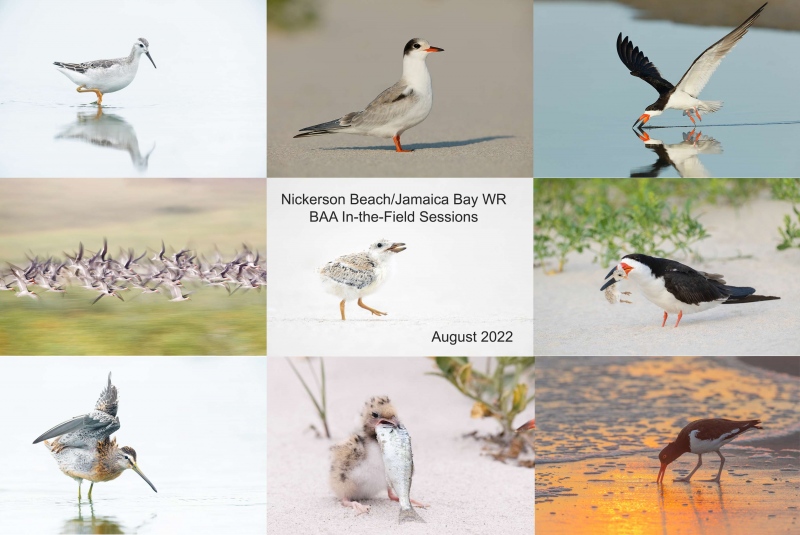
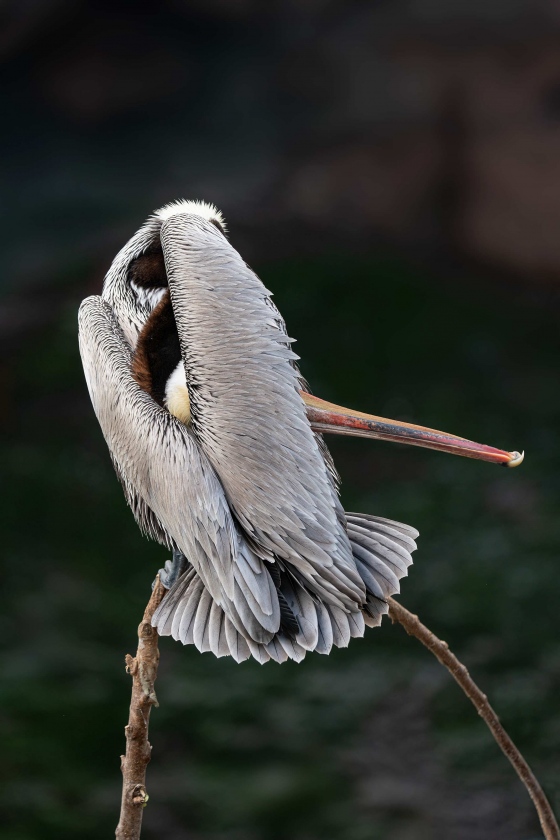
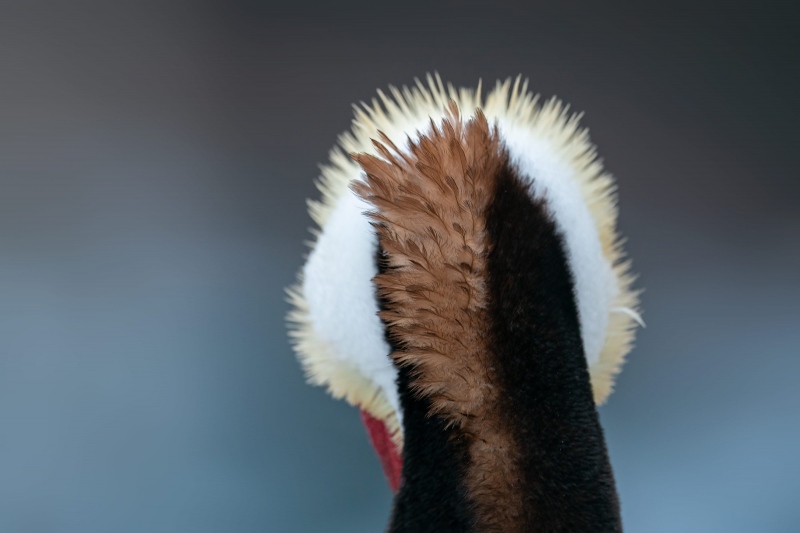
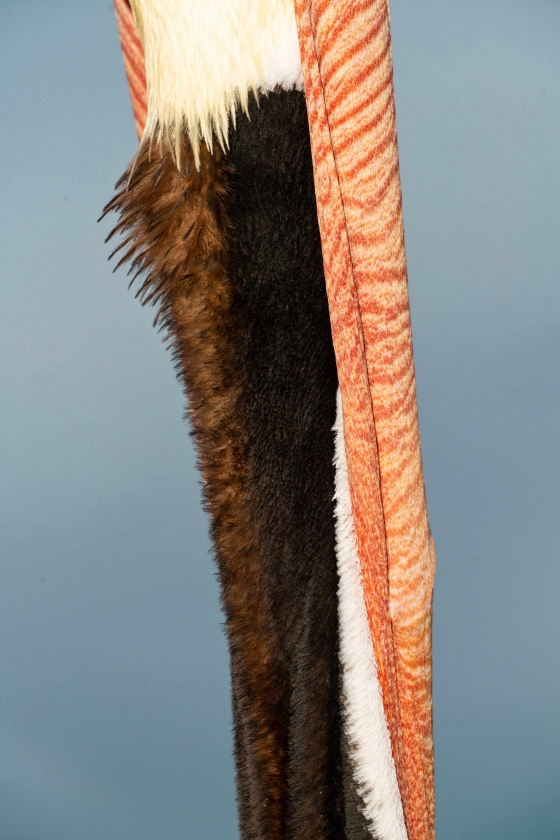
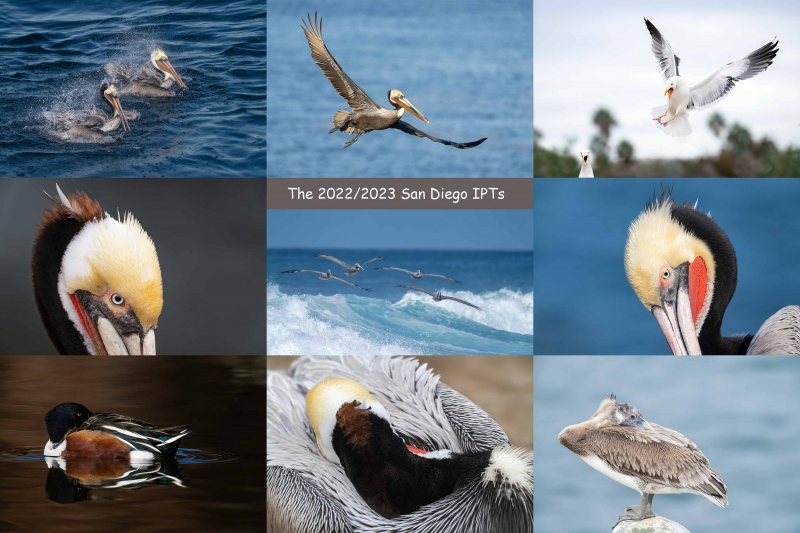
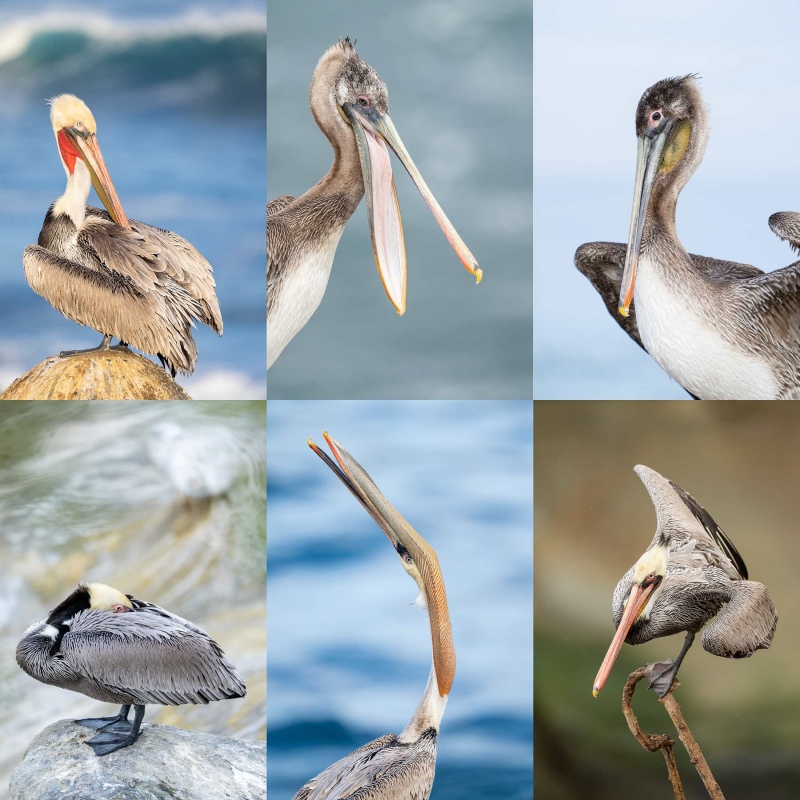
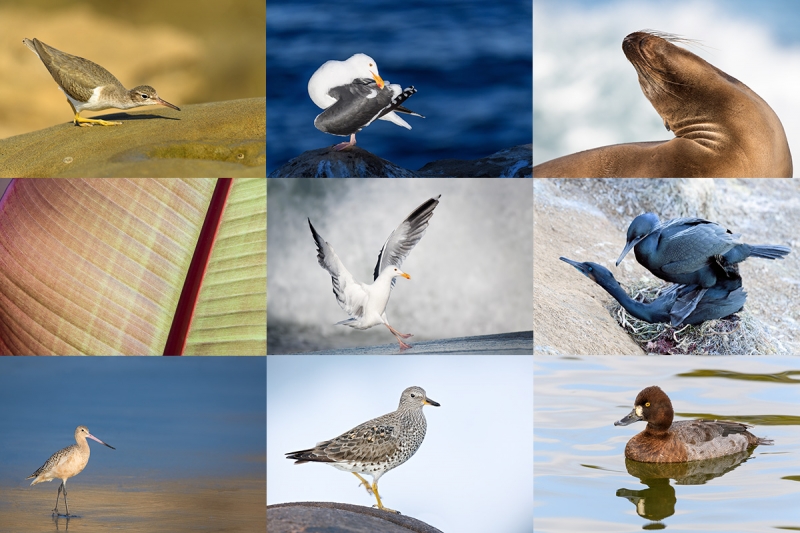

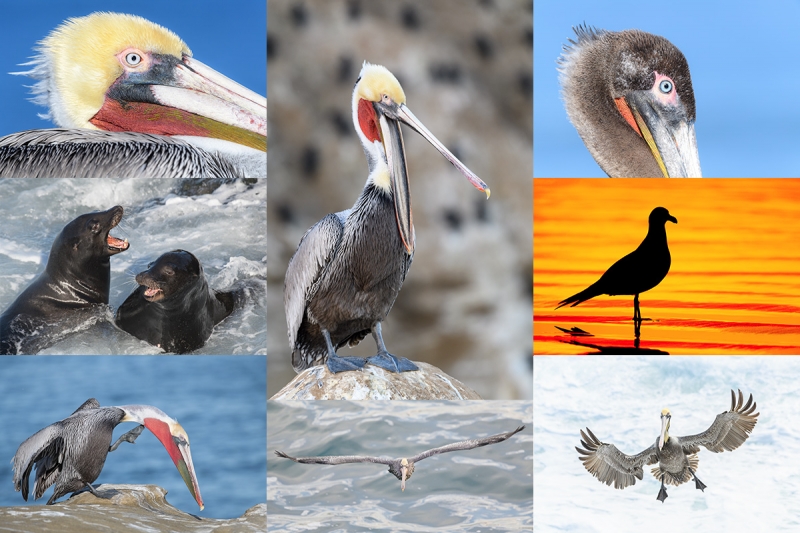














My preference is for no. 3, because of the color and especially the textures in the medium brown feathers.
Seems you’ve eliminated image #1 as your favorite, but even without the clue I would vote for #3. Beautiful background, great color, and plenty of depth of field, yet most non-birders (and maybe even some birders) might not recognize the beautifully abstracted pattern, color, and texture as a bird. BAA.
No. 1 for me. I love the design of the image because my eye continues to move through the image with no place to land. Have a safe trip.
To me without hesitation, the sensational one is #1
Thanks for leaving a comment, Carlotta. I looks as if I am odd-main out. See you at Nickerson Beach soon.
with love, artie
#1 Really like dark backgounds that make the image pop as the feather detail does in this image.
I didn’t know much about Billy Joel or his music, but I decided to watch the video because Fareed Zakaria is my favorite political commentators. I really enjoy it — and learned so much. Thanks!
The guy is an excellent interviewer and like me, he adores Billy Joel and his music.
with love, artie
I find #1 to be the most interesting.
I think image #1 is extraordinary. The lighting, detail, and composition are otherworldly.
Thanks, a stack, Steve.
with love, artie
Artie,
Thanks for sharing the Billy Joel interview. I enjoy his music and did not know much about his background. This was a great interview. What an amazing talent he is.
Hey Fred,
My pleasure. I agree, but only 100%
with love, artie